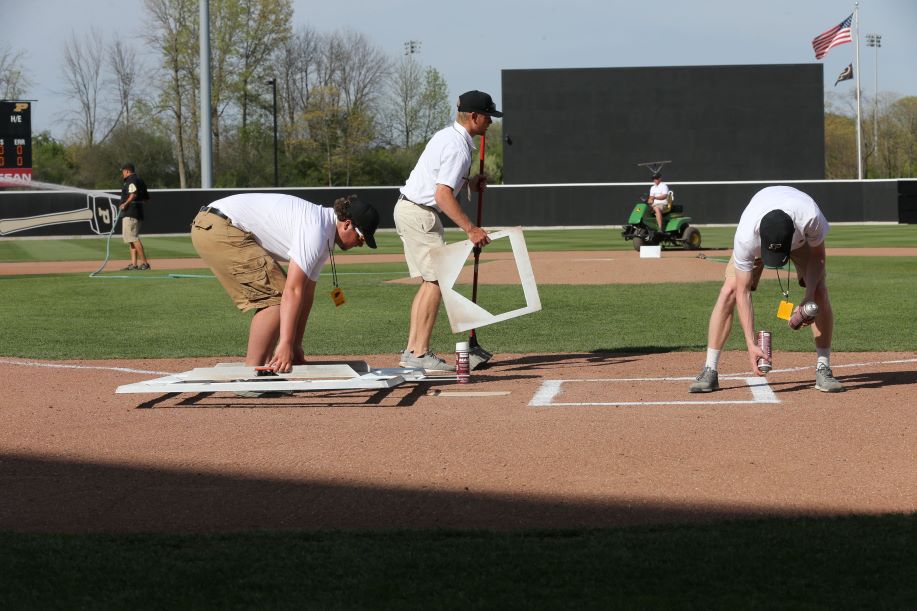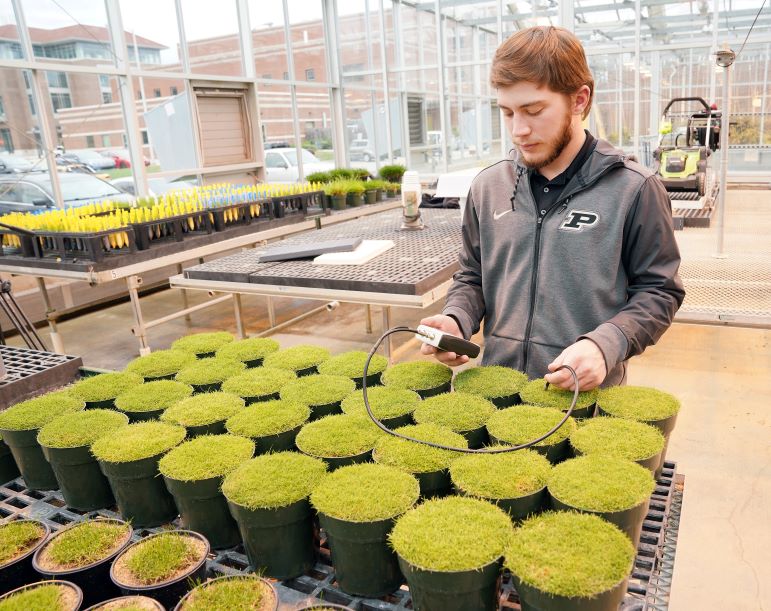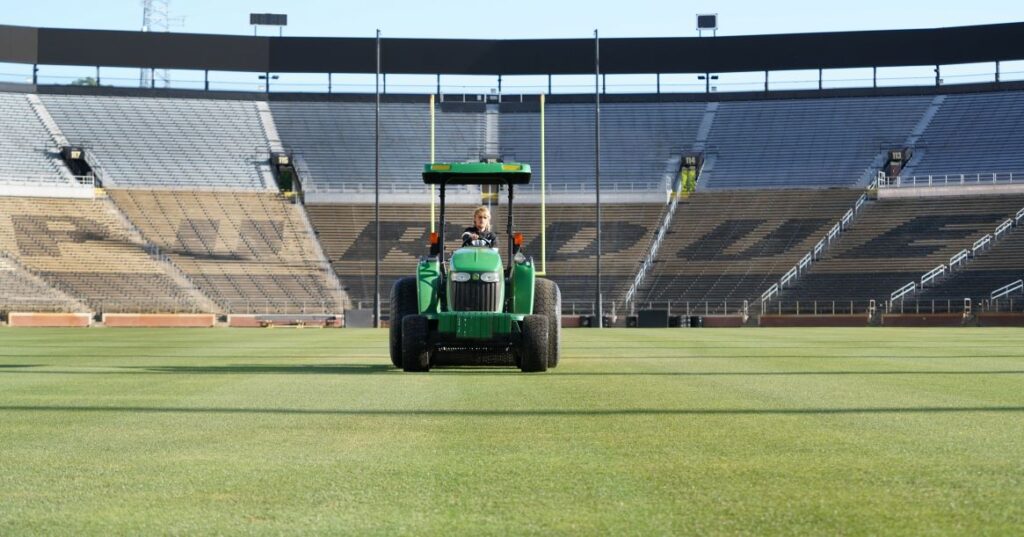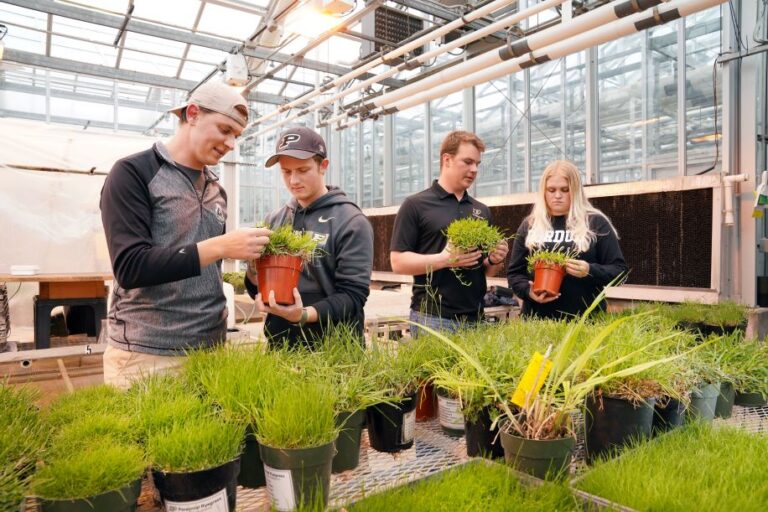The following is the next in our series delving into colleges and universities that offer programs devoted to turfgrass management, turfgrass science, and related disciplines. In this edition, we examine the Turfgrass Management and Science program at Purdue University.
Purdue University Turfgrass Management and Science students learn to oversee and implement programs for the production, maintenance and performance of a variety of turfgrass areas such as golf courses, athletic fields, lawns, parks and sod farms. The program combines basic scientific principles, technical agronomic information, business and management coursework, written/oral communication and problem-solving skills to prepare graduates for a wide range of careers.
This program’s storied history dates back to SFMA Founder William H. Daniel, Ph.D., who was heavily involved in all aspects of turf education and research as one of Purdue’s first turf professors. Daniel has been honored by scientific societies, foundations, associations and the governor of Indiana for his career efforts, and Purdue’s turfgrass research and diagnostic center is named after him.
“His emphasis was all things turf – lawns, golf and sports fields – but he recognized that there were some things that needed to happen to raise the bar professionally for sports field managers,” said Cale Bigelow Ph.D., professor, Department of Horticulture and Landscape Architecture, Turf Science, Management and Ecology at Purdue. “He was very interested in the safety of the athletes on the fields, especially keeping them dry.”

According to Bigelow, in the early days of the Purdue turfgrass program, there were only two faculty members involved. Today, there are five faculty allocated to turfgrass, as well as a fine-tuned curriculum. Sixty of the 120 credits required for graduation are the basic sciences, humanities, social sciences, and other general education classes. Thirty credits are related to the technical aspects of turfgrass management – including three turfgrass-specific classes, soils, soil fertility, pest management, as well as electives in everything from plant propagation to landscape contracting (depending on the student’s schedule and area of interest). The remaining 30 credits are all business related.
“We made that change approximately 10 years based on feedback from alumni and industry professionals, because once you ascend in your role in the industry, you become a resource manager,” said Bigelow. “It’s actually a fairly balanced plan of study. There are the basic sciences, there is the technical aspect, there are the practical things related to turfgrass management, but there is also the business side of it, which really prepares a student to pursue a wide variety of career options.”
According to Bigelow, the majority of Purdue Turfgrass Management and Science students are pursuing careers in the golf course management industry due to attractive starting salaries. However, Purdue turfgrass alumni can be found in the National Football League, Major League Baseball, and other high-level sports field management roles, as well as careers as Extension educators, sales, and in other areas of the green industry. But Bigelow has also had students who have gone on to pursue careers in medical, dental, financial planning, business management, and other fields.
“It has reinforced that the recipe we have for our plan of study is a good one,” he said. “They can do a lot of different things – wherever their passion takes them.”
For those enrolled in the Purdue Turfgrass Management and Science program, there are plenty of opportunities for internships, hands-on experience, clubs, and even undergraduate research.
“Anyone who comes in as a true freshmen will go through departmental orientation,” said Bigelow. “As part of that, my colleagues and I will talk about what we do – and we all have opportunities for undergraduates if they want to do a research experience.”

Bigelow added that students have the opportunity to work with the Purdue sports field management staff at the various venues for Boilermakers athletics – including football, baseball, softball and soccer.
“That has been a really big strength for us, and the students get hands-on practical experience,” he said. “We also have two golf courses on campus, and some of our students will work at those; although I get the sense that they are not as thrilled with the 6 a.m. start time.”
Between their first year and graduation, Purdue turfgrass students have to log 320 hours of work related to the green industry. According to Bigelow, that could be anything from working on the campus sports fields to working in the greenhouse or in a traditional summer internship. He added that in a hands-on industry such as turfgrass, it would be a disservice to the student if they weren’t doing something to experience what the career actually involves.
Bigelow added that enrollment in the Purdue Turfgrass Management and Science program typically hovers in the range of 26 to 31 students. Most students join the program as freshmen, but others enter the program as transfer students or through other avenues.
“We have an exploratory college on campus that attracts approximately 800 students who enroll directly into exploratory, and they have four semesters to find a home. Sometimes we will pick up one or two from there,” said Bigelow.
The “Pathway to Purdue Agriculture” program is another unique offering for in-state students entering the College of Agriculture. If Purdue admissions won’t directly admit a student to our program, the Pathway to Purdue Agriculture allows in-state College of Agriculture majors to take classes in West Lafayette at Purdue in addition to taking classes at a community college five miles from campus.
“They are co-enrolled,” said Bigelow. “Then they don’t have to wait four semesters to get into the stream. It’s a helpful mechanism to get additional students in the door.”
According to Bigelow, the Purdue Turfgrass Management and Science program faces a challenge faced by many turfgrass programs throughout the country – university admissions requirements limit the number of students who have the necessary GPAs and test scores for admission.
“It’s a battle that we fight continually with admissions,” he said. “It would be nice to crack that open a little. If I had 20 students as freshmen, all of them would have great careers in our industry in four years.”
Another challenge that is not unique to Purdue is attracting students to the turfgrass program and raising awareness of the turfgrass industry in general.

“Our department – because we have horticulture, lawn and landscape, turf and other majors – did a marketing campaign highlighting the different majors,” said Bigelow. “But, as far as attracting students, a lot of it has been word of mouth through alumni or others in the industry.”
He added that he and other colleagues throughout the country have been working to raise awareness with high school teachers and guidance counselors.
“A Master’s student who is working with me right now – Stephen Campbell – is putting together a small pilot turfgrass curriculum for Indiana high school ag educators,” said Bigelow. “He has eight or nine high school educators who are going to give it a try this fall. Those are the types of things we need to do to create awareness.”
According to Bigelow, what sets the Purdue Turfgrass Management and Science program apart is the faculty, the support of its deans, the history of the program, and the strong network of alumni. Another benefit of Purdue is that everything is close on campus – students who live in the dorms and work in sports field management have to travel no more than a mile and a half to get to work.
“What has helped us is our faculty – we all care, and we are passionate about the turfgrass science disciplines,” he added.
For more information about the Purdue University Turfgrass Management and Science program, visit https://turf.purdue.edu/students/.
SportsField Management magazine will detail other college and university turfgrass programs in coming issues. If you would like your college or university profiled, please contact John Kmitta at jkmitta@epgacceleration.com or 763-383-4405.

